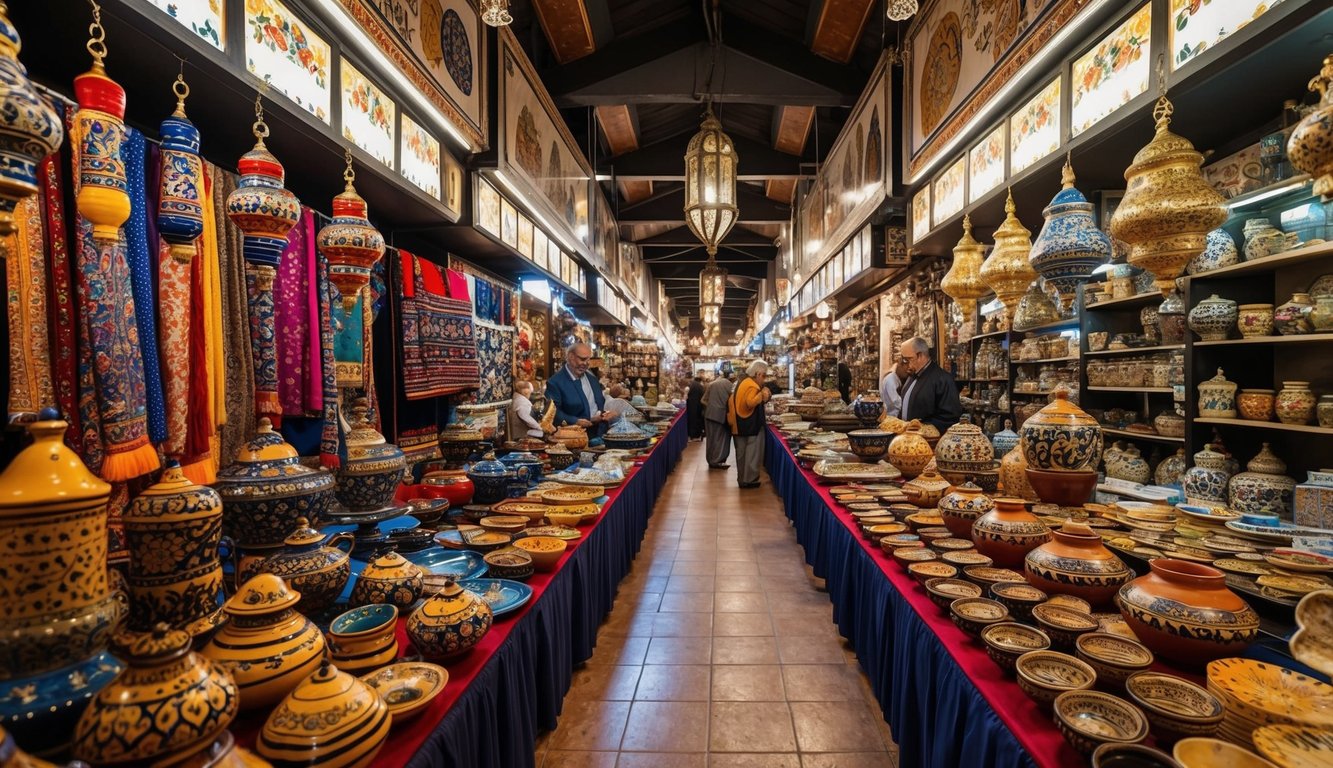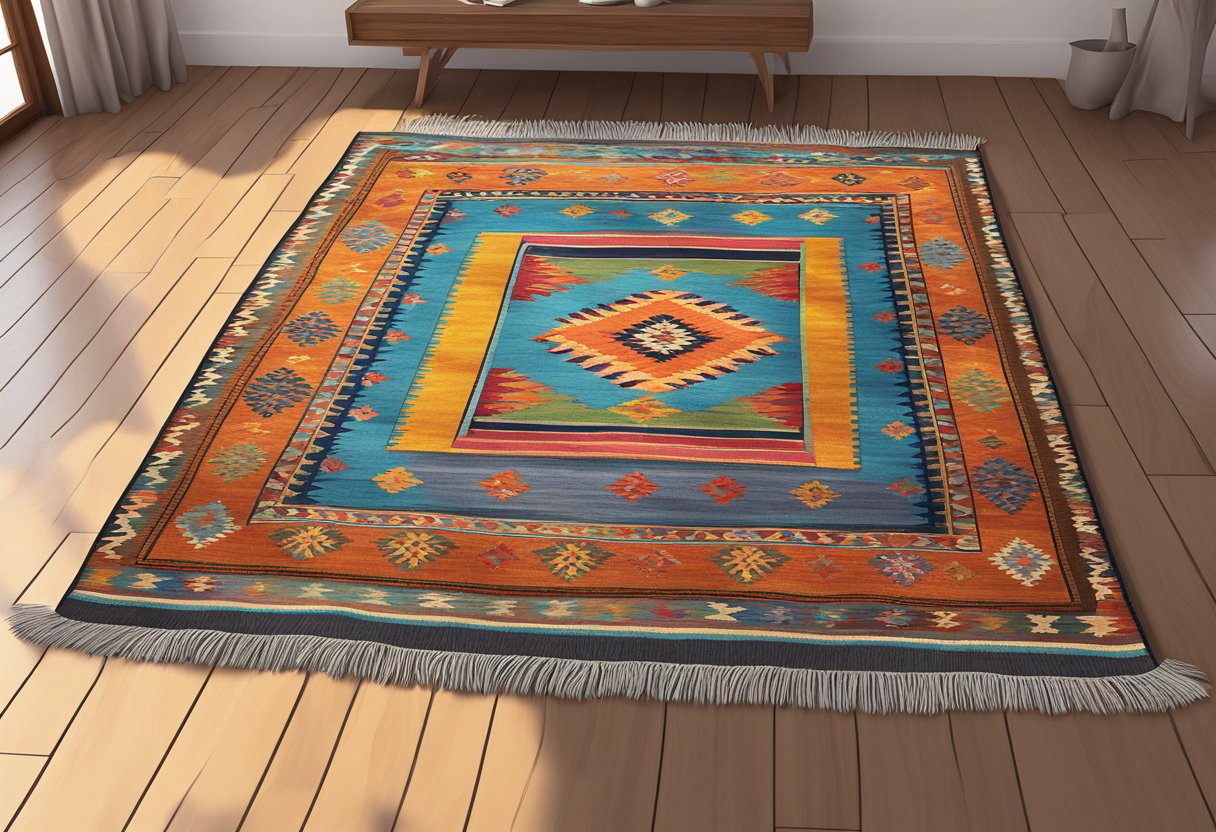What Separates Turkish Handicrafts from Those of Other Countries?

Turkish handicrafts have a rich history dating back thousands of years. These crafts showcase the country's cultural heritage and artistic traditions. From intricate ceramics to beautiful textiles, Turkish artisans create a wide range of handmade items.
Turkey's handicraft tradition stands out for its quality and diversity. The skills have been passed down through generations, preserving unique techniques and styles. While many countries have seen a decline in traditional crafts, Turkey continues to value and support its artisans. This commitment helps keep age-old practices alive in a modern world.
The Rich Legacy of Turkish Craftsmanship

Turkey's handicraft tradition stands out as a shining example of artistry and skill. This land, where East meets West, has been a melting pot of cultures for thousands of years. The result is a diverse and refined array of handmade goods that captivate people worldwide.
Turkish pottery and ceramics are renowned for their beauty. Artists create stunning pieces with bright colors and intricate designs. These items range from decorative plates to functional bowls and tiles. The famous Iznik pottery, with its blue and white patterns, is a prime example of this craft.
Weaving holds a special place in Turkish culture. Skilled artisans produce carpets, kilims, and textiles using wool, silk, and cotton. Each region has its own unique patterns and techniques. The vibrant colors and intricate designs of Turkish rugs are particularly sought after.
Metalworking is another area where Turkish craftspeople excel. They create beautiful objects from copper, brass, and silver. These include decorative items, kitchenware, and jewelry. The attention to detail in Turkish metalwork is truly impressive.
Woodworking is a cherished craft in Turkey. Artisans use various techniques like carving, inlay, and marquetry to create stunning pieces. These range from furniture to musical instruments and decorative objects. The skill of Turkish woodworkers is evident in the intricate patterns and smooth finishes of their creations.
Calligraphy holds a special place in Turkish art. This form of writing is not just about communication, but also about creating beautiful visual designs. Islamic calligraphy is particularly important, with artists producing works of great beauty and spiritual significance.
Glasswork is another area where Turkish artisans shine. They create colorful lamps, vases, and other decorative items. The famous Turkish mosaic lamps are a prime example of this craft, casting beautiful patterns of light when lit.
Embroidery and needlework are highly valued in Turkish culture. Artists create stunning designs on fabrics using various techniques. These can be seen on clothing, household items, and decorative pieces.
Felt-making is a traditional craft that has been practiced in Turkey for centuries. Artisans use wool to create warm, durable fabrics. These are used to make rugs, clothing, and other items.
Here's a brief overview of some key Turkish handicrafts:
| Craft | Materials | Common Products |
|---|---|---|
| Ceramics | Clay, glaze | Plates, bowls, tiles |
| Weaving | Wool, silk, cotton | Carpets, kilims, textiles |
| Metalworking | Copper, brass, silver | Kitchenware, jewelry |
| Woodworking | Various woods | Furniture, instruments |
| Glasswork | Glass, metal | Lamps, vases |
| Embroidery | Thread, fabric | Clothing, decorative items |
| Felt-making | Wool | Rugs, clothing |
The historical significance of these crafts cannot be overstated. They have been practiced since ancient times, evolving through periods such as the Seljuk and Ottoman eras. Each period added its own unique touch to these traditional arts.
Turkish handicrafts have survived and thrived due to several factors:
- Cultural crossroads: Turkey's location allowed for the exchange of ideas and techniques from many civilizations.
- Continuous practice: Unlike in some other parts of the world, these crafts have been practiced without interruption for centuries.
- Quality and refinement: Long-standing traditions have led to highly sophisticated techniques and products.
- Variety: The wide range of crafts practiced in Turkey is truly impressive.
These factors have helped Turkish handicrafts maintain their relevance and appeal in the modern world. They continue to be appreciated for their beauty, quality, and cultural significance.
Common Questions About Turkish Handicrafts

How Do Turkish Craft Techniques Stand Out?
Turkish handicrafts use unique methods passed down for generations. Carpet weaving involves special knots and patterns. Ceramics feature intricate hand-painted designs. Metalwork uses delicate engraving and inlay techniques. These methods create items with distinct Turkish style.
What Makes Turkish Crafts Culturally Special?
Turkish crafts reflect the country's rich history and diverse influences. They blend elements from Central Asian, Middle Eastern, and Mediterranean cultures. Many crafts have deep ties to religious and social traditions. Items like prayer rugs and evil eye charms hold special meaning in Turkish society.
Which Turkish Arts Show Off the Country's Heritage?
Several arts highlight Turkey's unique heritage:
- Ebru (paper marbling)
- Calligraphy
- Miniature painting
- Tile making
- Carpet weaving
- Metalworking
These arts combine beauty with cultural symbolism.
What Are Some Iconic Turkish Folk Art Examples?
Key examples of Turkish folk art include:
- Colorful evil eye beads
- Iznik pottery with floral designs
- Copper coffee pots (cezve)
- Embroidered headscarves
- Felt carpets and wall hangings
- Shadow puppets (Karagöz and Hacivat)
These items showcase Turkey's artistic traditions.
How Are Turkish Craft Materials Unique?
Turkish crafts often use local materials in special ways:
- Wool from Anatolian sheep for carpets
- Clay from specific regions for ceramics
- Copper mined in Turkey for metalwork
- Local dyes from plants for textiles
These materials give Turkish crafts their distinct look and quality.
Which Turkish Art Forms Are Famous Worldwide?
Turkish carpets and kilims are known globally for their quality and designs. Turkish ceramics, especially Iznik tiles, are prized by collectors. Turkish calligraphy is respected in the Islamic world for its artistic style. These art forms stand out for their skilled craftsmanship and cultural significance.




